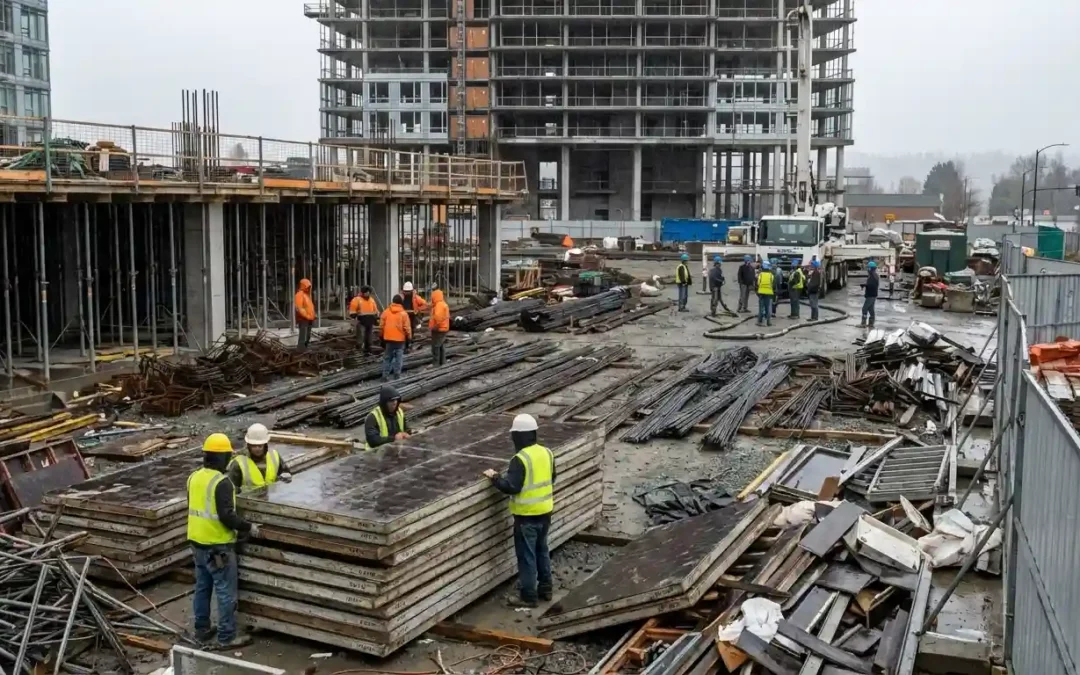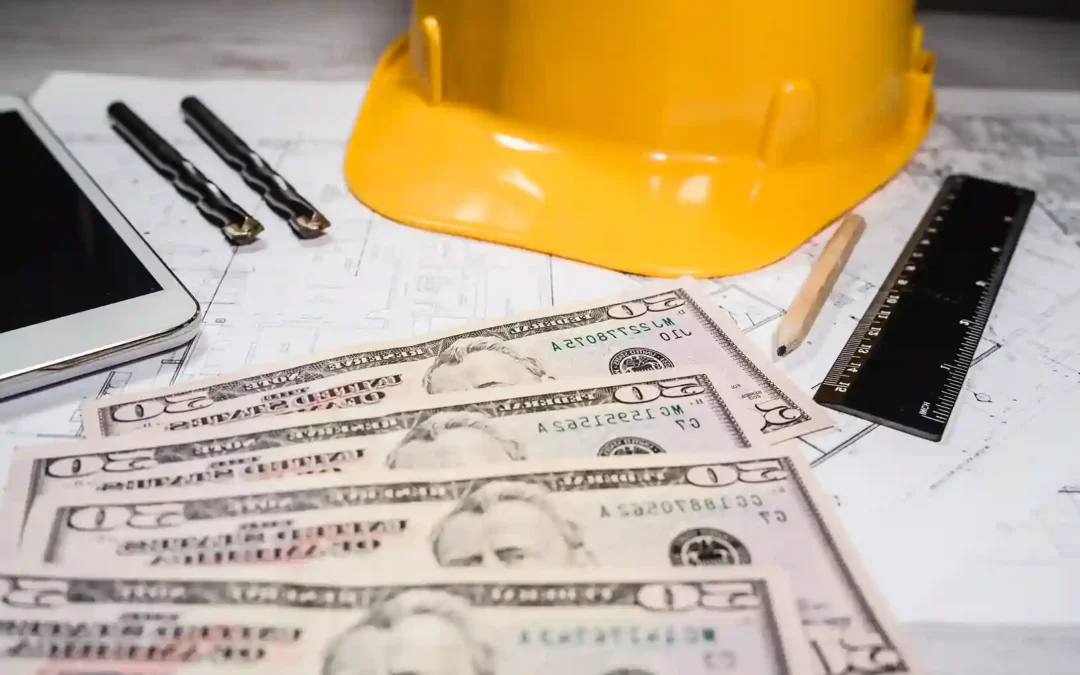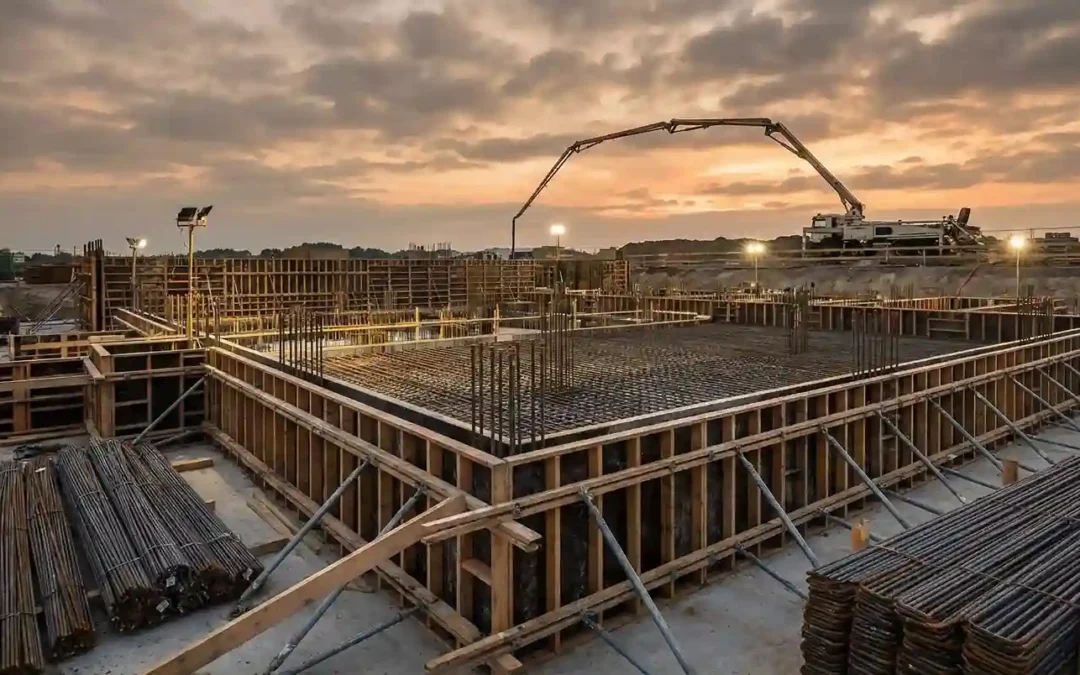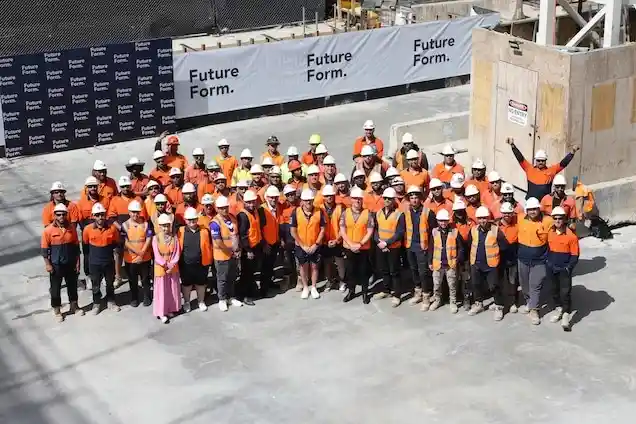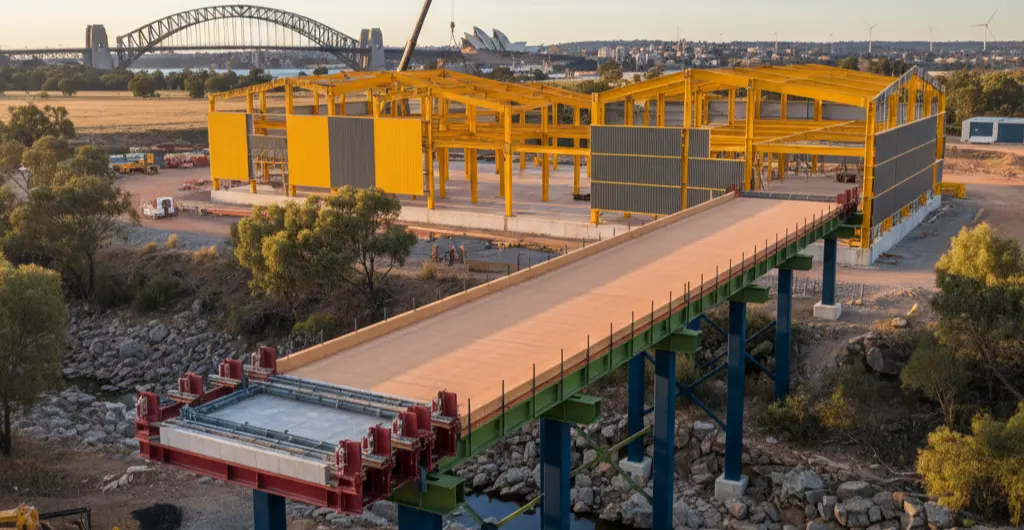
Efficiency, accuracy, and responsibility are now as important in modern construction as the actual materials used on the construction site. There is increasing pressure on developers to complete projects more quickly, safely, and with fewer problems while keeping structural integrity and budget under control. FRP structural packages, which include form, reo, and pour, are notable in this regard. Integrated FRP solutions combine the process under a single knowledgeable provider, in contrast to traditional methods that depend on different contractors for every step.
At Future Form have noticed a noticeable trend in the use of FRP structural packages by developers and construction experts. This method guarantees that every step of the concrete process is properly aligned, improves communication, and lowers risk. This change is meant to transform the planning, management, and completion of constructions rather than only increasing efficiency.
From fragmented process to unified packages
For many years, the traditional approach to concreting has been disconnected. The tasks of formwork, reinforcement, and concrete pouring were managed by various subcontractors, each bringing their unique schedules, goals, and ways of communicating to the project. The use of multiple contractors led to complicated coordination, often leading to delays, disputes, and inconsistencies in quality.
A complete FRP package, by contrast, brings together these three essential structural elements under a single specialised contractor. Each stage, from establishing the formwork to the last pour, commits to a coordinated strategy managed by one responsible team. The outcome is a well-coordinated operation that includes clear communication, well-defined responsibilities, and smooth workflows.
This model not only streamlines project execution but also improves the quality of construction. When form, reo, and pour work together, each component complements the others seamlessly. The formwork is constructed with a focus on reinforcement and pour planning. The placing of steel is carried out with an understanding of the pour schedule. Concrete is poured with the assurance that each crucial step has been properly completed.
Why integration outperforms separation
In construction, separation often results in inefficiency. When multiple contractors are assigned to achieve a single structural outcome, it’s highly likely that coordination issues will develop. Each subcontractor may have a different view of project requirements, which can result in rework, misaligned schedules, or even safety concerns.
Integrated FRP solutions address these challenges by bringing together all disciplines from the beginning of the process. An individual FRP contractor oversees and implements the entire process, guaranteeing that the project’s timeline, budget, and quality standards remain consistent all along.
Integration improves every measurable result:
- Productivity: Teams work together smoothly, eliminating the need to wait for other trades.
- Quality control: Standards remain consistent across every stage.
- Safety: Clearer communication will minimises risks on-site.
- Accountability: A single contractor holds complete responsibility for outcomes.
Developers switching to integrated FRP packages soon notice a significant improvement—not only in the operational efficiency of their sites but also in the overall reliability of delivery.
Beyond cost: the true value of integration
Initially, bringing on a single contractor for the complete FRP structural package may appear to be a bigger cost compared to engaging multiple contractors individually. Yet, the true worth is found in the hidden savings that integration offers.
Traditional methods often come with unexpected costs due to rework, delays, and conflicts among subcontractors. While these issues might not be obvious in the first place, but they can lead to considerable expenses as the project moves forward. Integrated FRP delivery continuously identifies and reduces numerous risks before they even appear.
Havingone contractor manage form, reo, and pour allows for a more precise approach to early-stage planning. The team has complete insight into the interaction of each step, enabling them to deal with potential issues before they develop, rather than responding to them after they happen.
Developers benefit from improved sequencing, better safety management, and fewer on-site variations—resulting in real cost savings and greater project reliability. Integration, in this context, goes beyond just minimising effort; it’s about creating more intelligent building solutions.
The real-world impact of integrated FRP
The impact of integrated FRP solutions reaches well beyond the construction site, impacting the entire project lifecycle. Developers making the switch to integrated FRP systems often share experiences of quicker project completions, improved reliability, and reduced coordination issues.
One of the key benefits is the efficiency of the programme. Having one FRP contractor in charge ensures that each task is organised and executed efficiently and smoothly. Materials are delivered on time, labour is efficiently managed, and concrete pours take place precisely as scheduled. The efficiencies build up across multi-level or large-scale projects, leading to significant time savings of weeks.
The implementation process improves safety. Having a single contractor oversee the form, reo, and pour phases simplifies the management of site conditions and minimises the overlap of activities among different trades. This enhances safety compliance while creating a more organised and predictable work environment.
For developers, these improvements lead to minimised risk, reliable timelines, and increased stakeholder trust—factors that all play a role in ensuring smoother project execution and achieving better outcomes.
The developer’s perspective: why it matters
From a developer’s perspective, integrated FRP structural packages highlight management and reliability. Traditional contracting often resembles a relay race, where each subcontractor hands off the baton with differing levels of effectiveness. A single mistake can impact the whole structure.
By using integrated FRP delivery, developers pass the baton to a single, skilled contractor. The entire process, starting with the initial formwork and ending in the final concrete cure, is managed by one dedicated team that takes full responsibility. The outcome is minimised delays, improved communication flow, and well-defined responsibilities.
For developers managing complicated projects, that clarity is essential. This allows for quicker decision-making, smoother progress tracking, and early identification of potential issues. This approach encourages strong, ongoing collaborations, bringing together developers and FRP contractors towards a common objective: to deliver safe, efficient, and high-performing structures on time.
How Future Form delivers confidence through FRP
In an industry where accuracy and reliability are key to achieving success, developers seek collaborators who can simplify intricate procedures while maintaining high standards. That’s where Future Form steps in.
At Future Form, our reputation is founded on a straightforward principle—achieving structural confidence through seamless integration. Our FRP structural packages simplify the process, providing developers with a single point of contact for all form, reo, and pour activities.
Our team expertly manage every stage of the concreting process, ensuring a smooth connection between design vision and on-site execution. This involves complete pre-construction planning, planned risk management, and open communication with stakeholders at every stage of the project lifecycle.
Every Future Form project succeeds through our integrated strategy—prioritising time efficiency, structural integrity, and clients trust. Consolidating FRP delivery with a single specialised contractor minimises management effort, improves site coordination, and produces visible results that developers can see in the built structure. Partnering with Future Form means you’re not merely hiring a contractor; you’re collaborating with a team that truly understands the structural, logistical, and financial goals of your development.
Standing apart in modern construction
Modern construction requires innovative approaches that go beyond traditional methods. As projects grow in size and complexity, the need for smooth coordination among trades becomes ever more crucial. Future Form’s integrated FRP approach delivers a distinct advantage by ensuring that each structural component is handled smoothly from beginning to end.
While some may view scheduling, supply, or site logistics as challenges, we recognise them as chances for improvement. By prioritizing integration, our team ensure that quality and timing remain consistent throughout every stage of construction. Developers can rest easy, knowing that a single contractor is responsible for managing the complete form, reo, and pour process.
What truly differentiates Future Form is our ability for balancing precision with functionality. We blend innovative equipment with direct experience, ensuring that every project—whether it’s commercial, residential, or infrastructure—is done with precision and attention to detail.
The future of structural delivery
The construction industry continues to grow, and the transition towards integrated FRP solutions marks an important move towards smarter and more efficient project delivery. Traditional contracting methods, which are which include divided responsibilities and increased risk, are being replaced by systems that emphasize teamwork and responsibility.
Developers have come to understand that true structural confidence is not achieved by combining various contractors; rather, it comes from placing trust in a single expert to provide a complete solution. By using FRP integration, they are simplifying processes while setting their projects up for long-term success.
At Future Form, we see integration not just as a process, but as a guiding concept. It’s about bringing together knowledge, accuracy, and reliability to create structures that are strong and exceed expectations. For developers in search of a collaborator capable of managing every stage of form, reo, and pour, Future Form remains at the centre of transforming the modern construction landscape for the future.
References
Building and Construction Productivity Commission. (2023). Improving efficiency through integrated construction delivery models. Construction Productivity Review. Retrieved from: https://www.buildingproductivity.gov/reports/integrated-delivery-models
Concrete Institute of Technology. (2022). Integrated FRP Systems: The future of structural concreting. Technical Bulletin Series. Retrieved from: https://www.concreteinstitute.org/publications
Miller, T., & Singh, R. (2023). Modern Construction Coordination: Reducing risk through integrated contracting. International Journal of Construction Management, 12(3), 56–68. Retrieved from: https://www.ijcmjournal.org/articles/integrated-contracting
Turner, L. (2022). The role of concrete contractors in modern high-rise construction. Construction Management Review, 8(2), 43–59. Retrieved from: https://www.constructionmanagementreview.com/highrise-structural-delivery

